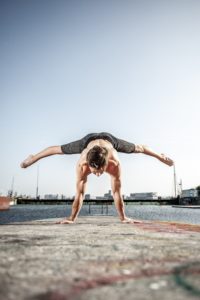Strength

Photo by Patrick Kool on Unsplash
“Do you ever have to yell at your staff?” The question was posed to me some time ago by my dance instructor. A dance studio is its own mostly self-contained world and I had been taking lessons for sometime before people learned that I was a vice president at a local university. Only a few figured out that meant I had a lot of college degrees. This particular instructor was also a sergeant in the Army Reserve. We danced together over a number of years as he came and went between tours of duty in Iraq and Afghanistan. That particular day, he was having trouble reconciling what he knew of me and what he experienced as leadership in the military.
I laughed in response to his question and said, no, I didn’t yell at people. After all, as a vice president, the people I supervised were always highly experienced, competent, and, for the most part, knew how to behave. I did say that I had a surprisingly effective ‘stern face’ that stood me in good stead when I did have to use it. We were in the middle of a dance lesson so we didn’t have a deeper discussion about the different styles of leadership needed for different environments or the fact that I’m really not a yeller in general. But it is an interesting reminder that in the same way our experiences lead to different ideas about leadership, they also have taught us different ideas about strength – particularly in leadership.
In our metaphorical yoga class, we are now moving beyond preparation and centering into the actual class. As I’m sure most of you know there are many types of yoga classes. Some are based on a specific style or philosophy, some are based in a particular teacher’s style, and others are designed to meet particular purposes for a day’s class. Each of the next few weeks, we’ll work through the components of most, though not all, yoga classes. We’ll begin with strength.
There are so many ways to think about strength. Merriam-Webster Online lists nine definitions, two of which have sub-definitions. They range from the ability to resist force to resisting attack, from legal, logical or moral force to degree of potency. In my experience when people think of strong leadership they often mean someone who leads by force of will or through the coercive exercise of power. For me, that’s the same as equating physical strength with the ability to lift more weight or run farther. And of course, that’s not wrong. It’s just limiting.
Understanding physical strength this way limits strength when it looks different. It limits our ability to understand yoga as a way to develop strength and power. Similarly, it limits our ability to exercise authority when we only have one idea of what it means to be strong. This limitation is part of what led to my dance instructor/army sergeant’s confusion. His experience of strong leadership was based on a particular style and he just couldn’t imagine this nice lady dance student behaving that way. He was right, I don’t behave that way. And maybe I couldn’t cut it as a leader in the military without developing a talent for yelling, though I’d like to believe that my stern face would do just as well.
Regardless of my potential to lead in the armed forces, I do think it benefits all of us to have a more nuanced understanding of both physical and leadership strength. I think today’s quote speaks to this idea and I believe yoga can help us develop this understanding.
Meditation:
Yee, R. (2002). Yoga: The Poetry of the Body. Thomas Griffin Books: New York.
